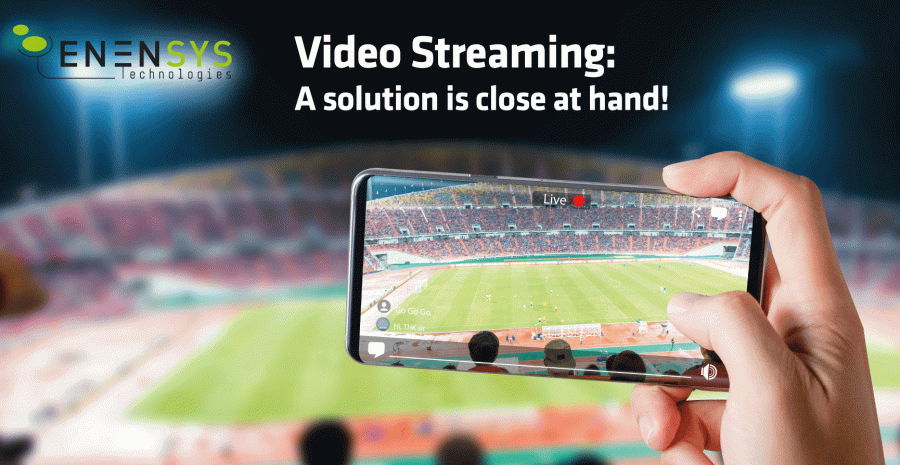
Blog
Video Streaming: A solution is close at hand! Part 3 of 3
Consumers’ insatiable appetite for videos over the internet is undeniable. Live prime-time events are increasing in frequency and in bandwidth demand. But is today’s network technology robust enough to handle this growing demand for online videos?
This is the final part of our blog series “Video Streaming”, in which we explore the OTT video growth explosion, and look at how network operators can arm themselves to deliver high quality videos streams, reduce churn, and attract new customers. The first and second blog posts can be found here and here, respectively.
Part 3: Using Multicast to Manage Traffic Spikes
In the first two parts of our blog, we talked about the astonishing increase in OTT Video consumption and traffic peaks caused by millions of users watching the same popular content at the same time. In this third part, we explore an efficient solution, based on Multicast, aka LTE-Broadcast, already implemented by a few operators worldwide.
As IP becomes more pervasive across a variety of networks, it makes economic sense for network operators to bundle services and offer them across multiple networks. This includes triple-play services (telephone, data and pay-TV services) and quadruple-play offers, with added mobile services.
A study by Akamai (Bit Rate and Business Model) shows higher quality streams generate 19.8% more emotional engagement. For this reason, Network Operators are increasingly looking for a solution which allows them to offer high-quality OTT TV services over DSL/Fiber, Satellite, as well as 4G or 5G networks. They are also looking to reduce the cost of scaling a traditional Unicast CDN and LTE Radio networks to support ever-growing video traffic demands and traffic peaks during prime-time and popular events.
What network operators need is a solution which allows them to deliver OTT content in an efficient way over any IP network. The solution must distribute high-quality OTT Video with low latency, similar to Digital Terrestrial TV (no hitch 99.999% of the time).
The solution is quite simple. It allows the delivery of the same content simultaneously to millions of users, across any IP network, using network resources for only one video stream. The solution uses Multicast, instead of (or in addition to) traditional Unicast.
Telstra has implemented this Multicast solution and here’s what they have found:
- Faster start-up time: Multicast users experience < 3 secs video start-up time compared to > 6 secs for non-Multicast users.
- Better video quality: Multicast devices stream at 720p (HD) vs. 576p (SD) for non-Multicast enabled devices.
- Longer Engagement: Multicast users stream +25% more per play compared to non-Multicast users.
In order to enable Multicast in their networks, operators can implement a Multicast solution, based on three key components: A Multicast Server, a Multicast Controller, and a Multicast Agent on receiving devices.
The Multicast Servers are usually offered as software designed to acquire content from the Head-End/Origin. They stream the content using Multicast and advanced Forward Error Correction technology. The OTT TV content is delivered to Home Broadband subscribers (DSL, Cable, Fiber), Wireless Broadband subscribers (4G and 5G), OTT DTH TV delivery over Satellite and Satellite Backhauling for OTT TV Services. The solution is designed to offer live sporting events and popular content delivery to millions of subscribers simultaneously. Other interesting uses involve pre-positioning VoD content, in addition to delivering massive software updates to Set-Top-Boxes and consumer devices.
The Multicast Controller is a software application designed to configure and control the Multicast content delivery parameters. It obtains the content list from a Content Management System and sends the content delivery instructions to a Multicast Server. It gathers end-user Consumption Reports and analyzes them to decide if content should be delivered in Unicast or Multicast.
The devices receiving Multicast streams need to be equipped with a Multicast Agent. This piece of software converts Multicast streams received from the Multicast Server for consumption by end-user Applications in their home network. The Multicast Agent is installed in the home network where it is accessible by all household devices.
With this solution, operators can offer Multicast on all broadband networks, as a single solution supporting content delivery to Cable, ADSL, Fiber fixed broadband as well as 4G, 5G Mobile subscribers.
Multicast allows operators to dramatically improve Quality of Experience by using Guaranteed Bit Rate delivery, reducing jitter in the network, and decreasing latency by removing buffering and implementing CMAF Low Latency.
A Multi-Network convergent Multicast solution supporting standard compliant interfaces and protocols can simplify the OTT video ecosystem. As a matter of fact, the operator avoids lock-ins to a single vendor and gains in flexibility. DVB specifications are supported for Multicast ABR and 3GPP specifications are supported for LTE-Broadcast. This includes fixed and mobile services using the same platform.
Many vendors offer one of these three components. In choosing a vendor, a network operator needs to consider three key elements.
- The first is to avoid being locked to a single vendor supporting proprietary implementations. As opposed to an open and standardized solution that can interoperate with other providers.
- The second criteria is their ability to support a diversity of networks – in order guarantee service continuity for customers in addition to availability everywhere, on every device.
- The third and final element to consider is the vendor’s commitment by the Multicast technology and its experience. An operator should work with a vendor whose focus in Multicast and Broadcast content delivery and has deployed this type of solutions on a large scale.
ENENSYS meets all three criteria mentioned above. Our new MediaCast OTT solution is showcased at our Headquarters in Rennes, France. It can be demonstrated at your premises upon request. Contact us for more details.
